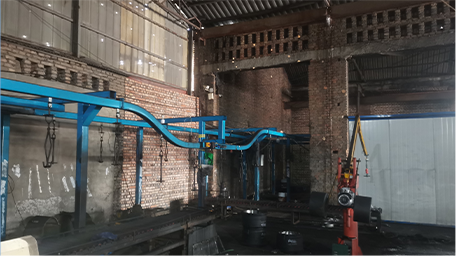Oct . 14, 2024 02:32 Back to list
Understanding the Key Differences Between Brake Drums and Brake Rotors
Understanding the Difference Between Brake Drums and Rotors
When it comes to the braking system of a vehicle, the components that play crucial roles are brake drums and brake rotors. Although both serve the same primary function—to slow down or stop the vehicle—they do so in fundamentally different ways. Understanding the differences between brake drums and rotors can help vehicle owners make informed decisions regarding maintenance and modifications.
What are Brake Drums?
Brake drums are cylindrical devices that are part of a drum brake system. Typically found on the rear wheels of many vehicles, brake drums consist of a hollow metal drum that rotates with the wheel. Inside the drum are brake shoes that, when hydraulic pressure is applied via the brake pedal, expand outward against the inside surface of the drum. This friction slows the rotation of the wheels, ultimately bringing the vehicle to a stop.
One of the significant advantages of brake drums is their ability to provide strong, reliable braking power, especially under heavy load conditions. Brake drums tend to be less expensive to manufacture than rotors and are often less susceptible to wear and tear from environmental factors such as water and mud. Additionally, they perform well in low-speed, high-load situations, making them suitable for trucks and larger vehicles.
However, brake drums can suffer from certain drawbacks. One major disadvantage is that they can experience brake fade at high speeds or after extended use, resulting in decreased braking efficiency. Furthermore, brake drums can become warped or cracked with excessive heat, which can be exacerbated by aggressive driving or frequent heavy braking.
What are Brake Rotors?
difference between brake drums and rotors

Brake rotors, on the other hand, are flat, circular discs typically found in disc brake systems, which are common in modern vehicles. Located between the brake pads and the wheel, rotors work in conjunction with brake calipers. When the brake pedal is pressed, hydraulic pressure forces the calipers to squeeze the brake pads against the rotor’s surface. This contact generates friction, which slows the rotor's motion and, consequently, the vehicle.
Rotors are known for their superior performance, particularly in high-speed or high-temperature driving conditions. Disc brakes typically provide better stopping power and more consistent braking action compared to drum brakes. Moreover, because the rotors are exposed to the air, they dissipate heat more effectively, which helps prevent brake fade and prolongs the life of the brake components.
However, brake rotors tend to be more expensive than brake drums, both in terms of manufacturing and maintenance. They can also be prone to warping, especially if they are subjected to extreme heat, which can be a concern for performance-driven or heavy-duty vehicles. Furthermore, rotors require regular inspection and replacing the brake pads frequently, which can add to the overall maintenance cost.
Comparative Analysis
In summary, brake drums and rotors serve the same fundamental purpose but differ significantly in their design, performance, and application. Brake drums are typically favored for their cost-effectiveness and reliability under low-speed or heavy-load conditions, while rotors are preferred for their superior cooling properties, performance at high speeds, and overall efficiency in modern automotive applications.
When deciding between drum and rotor braking systems, it is crucial to consider the specific needs of your vehicle, how you drive, and the conditions to which the vehicle is regularly exposed. Whether it's selecting the right braking system for a new vehicle or determining necessary maintenance for an existing one, understanding the differences between brake drums and rotors can lead to better performance, safety, and longevity of your vehicle's braking system. In the end, both components play an essential role in ensuring that your car can stop efficiently and safely, providing peace of mind on the road.
-
ROR Web Development: Build Fast, Scalable, Secure Apps
NewsAug.17,2025
-
Scania Brake Drums: OEM Quality for Optimal Safety & Durability
NewsAug.16,2025
-
R.V.I: Advanced Remote Visual Inspection for Precision
NewsAug.15,2025
-
Discover HYUNDA: Innovative Vehicles, Equipment & Solutions
NewsAug.14,2025
-
R.V.I: Unlock Advanced Insights & Real-time Performance
NewsAug.13,2025
-
Kamaz Brake Drum: Durable & Reliable for Heavy Duty Trucks
NewsAug.12,2025
